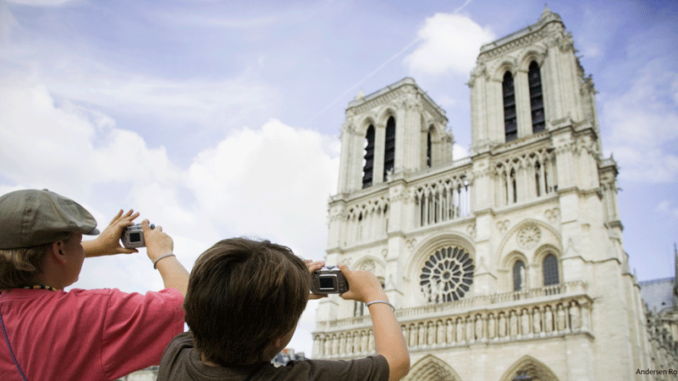
Catalonian Independence?
More than 800 people are injured after an election in Europe turned violent last weekend. But that didn’t stop the vote from going forward.
Catalonia, a region of Spain with its own distinct language and culture, voted overwhelmingly on Sunday to seek independence from Spain. Over 90 percent of the votes were in favor of secession, while less than 8 percent were against. Catalan authorities say that these numbers are incomplete because roughly 770,000 were lost after ballot boxes were seized by Spanish police.
Riot police, in an attempt to suppress the voters, used batons and rubber bullets on the crowd. They were also accused of pulling people out of polling places by their hair, and breaking peoples’ hands when they attempted to vote. Many polling locations hid their ballot boxes from the police so that they would not be seized. When firefighters stepped in to defend the voters, the police clashed with them as well.
Spanish officials refuse to recognize the results of the vote, saying that the referendum itself is unconstitutional and should never have legally happened. Those opposed to Catalan independence have also said that the voting system was faulty, with people being allowed to vote multiple times. Either way, it is likely that the results of the vote will be challenged by the Spanish constitutional court.
Dig Deeper Locate Catalonia on a map. Based on what you have read and seen in the news, why do many Catalonians want independence from Spain?
A Facelift for Notre Dame
A few weeks ago, btw brought you a look at the renovations of Big Ben, the iconic London clock tower. Now, another major European landmark is undergoing a facelift: Notre-Dame cathedral in Paris. And it might need some help.
Notre-Dame was first built in the 12th and 13th centuries. It had major improvements done to it between 1844 and 1864. Small updates and routine maintenance have been done almost constantly since then so that the building’s beautiful façade is maintained. But pollution, natural erosion by wind and rain, and time itself all have taken their toll. Parts of the limestone structure are so weakened that they crumble at a touch. And so many pieces have fallen off that they are stacked up neatly on a small lawn in back of the cathedral. Many of the cathedral’s lovely design elements, such as the flying buttresses, are actually there to help support the building’s weight. Fixing them is not a matter of beautification, but is necessary to the structure’s survival.
Paying for such a massive overhaul, however, is more complicated. The estimated cost for urgent repairs is nearly $40 million, while it will cost closer to $110 million for complete renovations. The French state currently contributes about $2.4 million per year and has pledged to double that amount for the next ten years. To supplement this, a small group of volunteers called the Friends of Notre-Dame Foundation is turning to private donors in the United States to help. The group plans to organize dinners, concerts, and other events in both France and the United States to support the renovation effort.
What Do You Think? About 30,000 people from around the world visit Notre-Dame every day, which is about 13 million per year. Do you think other countries have an obligation to help pay for its renovation? Why or why not?
Inside the Rohingya Refugee Crisis
In Western Myanmar, the Rohingya people have been persecuted by the Burmese government for decades. The Rohingya are a Muslim ethnic minority group (the majority are Buddhists). On August 25, a Rohingya militant group attacked police posts and army bases in an effort to stand up against years of persecution. The Burmese army, together with Buddhist vigilante groups, responded by torching Rohingya villages and killing hundreds of villagers. The United Nations is calling this attack genocide.
Since then, at least half a million ethnic Rohingya refugees–more than half of the total Rohingya population in Myanmar–have fled over the border to Bangladesh to join the more than 200,000 Rohingya refugees who were already living there. Inside the refugee camps, however, these displaced people now face even more horrors. Many of the camps have no food or medicine. There are also no bathrooms. Poor sanitation has led to concerns about possible outbreaks of deadly diseases such as cholera and tuberculosis.
The Bangladeshi government is working on converting an additional 2,000 acres of land into settlements, but refugees have begun arriving early, before adequate infrastructure is set up. The government has also said that it doesn’t plan to grant refugee status to the Rohingya and hopes that they will eventually return to Myanmar. But without this status, it is more difficult for the displaced Rohingya to receive humanitarian aid. The task has largely fallen to Bangladeshi volunteers, and so the effort is disorganized, insufficient, and even dangerous. Last week, a woman and two children were killed when they were trampled trying to get to a truck that was delivering food.
What Do You Think? In your opinion, should the Bangladeshi government be required to accept Rohingya refugees and grant them official refugee status? Why or why not? Remember to be sensitive to people with other viewpoints when responding.
Saudi Arabia Lifts Female Driving Ban

Here in the United States, most women take their right to drive a car for granted. However, this isn’t the case everywhere in the world. In Saudi Arabia, for example, women have traditionally been banned by law from driving. Those in favor of keeping women off of the roads claimed that allowing women to drive would violate Saudi cultural norms, confuse male drivers, or even lead to the breakdown of the Saudi family as women achieve more independence. Some even claimed that it was hazardous to women’s health to drive.
But the ban was overturned by a royal decree last Tuesday. The change came about largely because of a movement led by the king’s son, Crown Prince Mohammed bin Salman, to modernize Saudi Arabia socially and economically. Even better, women will be able to apply for a driver’s license without having to ask for permission from their husbands and fathers. Current “guardianship” laws prohibit women from traveling abroad, working, or undergoing medical procedures without the permission of their male “guardian.”
Aside from being an equality issue, lifting the ban on women driving also helps out the Saudi Arabian economy. Now that women will be able to drive themselves, they are more likely to enter the workforce. Also, other countries (such as the United States) will tend to look more favorably on Saudi Arabia now that this ban is no longer in place.
